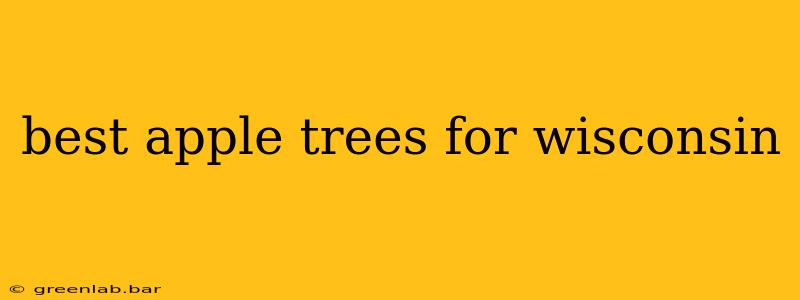Wisconsin's climate presents unique challenges for apple growers, but with careful selection, you can enjoy a bountiful harvest of crisp, juicy apples right in your backyard. This guide explores the best apple tree varieties that thrive in Wisconsin's often harsh winters and short growing seasons, helping you choose the perfect trees for your orchard, no matter its size.
Understanding Wisconsin's Growing Conditions
Before diving into specific varieties, it's crucial to understand Wisconsin's climate. The state experiences cold winters with significant snowfall and relatively short, cool summers. This means choosing apple trees with good cold hardiness and a shorter chilling requirement is vital for successful fruit production. Factors like your specific microclimate (sun exposure, soil drainage, and wind protection) also play a role in your selection.
Top Apple Tree Varieties for Wisconsin
Several apple tree varieties have proven themselves exceptionally well-suited to Wisconsin's growing conditions. These are known for their hardiness, disease resistance, and, of course, delicious fruit.
Early Season Varieties (Harvesting in August/September):
- Honeycrisp: A popular choice nationwide, Honeycrisp apples are known for their exceptionally juicy, sweet-tart flavor and crisp texture. While requiring a longer chilling period than some other varieties, they are increasingly successful in warmer parts of Wisconsin with proper site selection and winter protection.
- Paula Red: An early-season favorite, Paula Red apples offer a sweet and slightly tart flavor. These trees are relatively disease-resistant and produce consistently well in Wisconsin's climate.
- Zestar!: A very early-season apple, Zestar! offers a sweet and tart flavor with a satisfyingly crisp bite. Their relatively short chilling requirement makes them a good choice for warmer microclimates within Wisconsin.
Mid-Season Varieties (Harvesting in September/October):
- Macintosh: A classic apple variety, McIntosh apples are known for their soft texture, sweet-tart flavor, and excellent juice quality. They're moderately hardy and do well in many areas of Wisconsin, though they may require some protection from harsh winter winds.
- Cortland: Cortland apples are similar to McIntosh in flavor and texture but possess superior storage capabilities. Their juicy flesh and relatively good disease resistance make them a reliable option for Wisconsin growers.
- Red Delicious: Though not as highly regarded for flavor as some other varieties, Red Delicious apples are incredibly hardy and prolific producers, making them a good choice for beginners or those seeking a large harvest.
Late Season Varieties (Harvesting in October/November):
- Fuji: These apples are renowned for their sweet, crisp, and firm texture. Their longer storage life makes them ideal for extending your apple enjoyment through the winter. While requiring a longer chilling period, they are increasingly cultivated successfully in southern Wisconsin.
- Braeburn: Braeburn apples offer a complex flavor profile – a balance of sweetness, tartness, and spice. Their excellent storage qualities and decent cold hardiness make them worth considering, particularly in more moderate areas of the state.
Choosing the Right Apple Tree for You
Selecting the perfect apple tree involves considering several factors beyond hardiness:
- Pollination: Most apple trees require a pollinator (another compatible apple tree variety) for optimal fruit production. Research which varieties are good pollinators for your chosen tree.
- Space: Apple trees range in size from dwarf varieties suitable for small gardens to standard-sized trees needing ample space. Consider the available space in your yard.
- Rootstock: The rootstock influences the tree's final size and growth habit. Dwarf and semi-dwarf rootstocks are popular for smaller yards.
Beyond Variety Selection: Tips for Success
Even with the best variety, proper care is essential for a successful apple harvest in Wisconsin:
- Planting: Plant your trees in well-drained soil in a location with ample sunlight (at least 6-8 hours per day).
- Pruning: Regular pruning helps maintain the tree's shape, encourages fruit production, and prevents disease.
- Pest and Disease Management: Monitor your trees for pests and diseases and take appropriate action to prevent problems.
- Winter Protection: Young trees may need protection from harsh winter winds and extreme cold. Consider wrapping the trunks or using windbreaks.
By carefully considering these factors and choosing the right apple tree varieties, Wisconsin gardeners can enjoy fresh, homegrown apples year after year. Happy growing!

